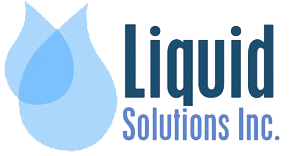
Locally Owned & Operated
Liquid Solutions, Inc. is a locally owned and operated Michigan company specializing in dust control and bulk calcium chloride distribution. We began in 2008 as an endeavor to supply local plow companies with an effective alternative to rock salt for melting away snow and ice in parking lots and roadways. Our research led us to a Michigan company that produces a liquid calcium chloride for ice and dust control from wells right here in Michigan. Partnering with Michigan Chloride Sales, LSI has the trucking infrastructure to deliver product on time year around.
Liquid calcium chloride is a naturally occurring material mined in central Michigan. The mineral brine that is extracted is clear and almost odorless and is environmentally friendly. Liquid calcium chloride is relatively harmless to plants, soil and grass and does not present any hazard to the environment when used properly. There is no human or animal health risks associated with ordinary exposure to this material. It has less impact on the ground water than an oil brine that some companies use for the same purpose of melting snow and ice, as well as dust control.
Liquid Solutions supplies landscape/plow companies with product for use in the winter months to apply before/after snow and ice events. Our commitment to professional service, courteous staff and on time deliveries has made us a leader in Michigan dust control and bulk calcium chloride distribution.

-
Locally owned and operated Michigan company specializing in dust control services and bulk calcium chloride distribution.
-
Partnered with Michigan Chloride Sales, LSI has the trucking infrastructure to deliver product on time year around.
-
LSI’s commitment to professional service, courteous personnel and on time deliveries has helped us to become a leader in Michigan dust control and bulk calcium chloride distribution.
MSDS Material Safety Data Sheet:
Product Name: Mineral Well Brine Solution: MSDS:001 Effective Date: January 1, 2006

Frequently asked questions
Request a Free Quote
Fill out the form below or call (616) 340-5864
Mailing Address: 6757 Cascade Rd. SE #45 Grand Rapids, MI 49546


.jpg)


